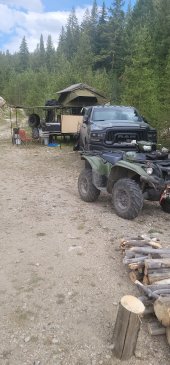roaming ram
New Member
- Joined
- Jul 24, 2022
- Messages
- 36
i have three 12 volt lead acid batteries in parallel with 200 watt renogy solar panels with supplied charge controller. i have fuses on all components directly wired to batteries. they run fridge/freezer, water pump, lights, propane heater and a 2k inverter. when i first started using the system i could go 3 days without recharging batteries just testing the limitations. it stayed that way for almost 2 full years. charging the batteries with solar even through the winter when there is no usage. going into this third summer they couldnt maintain their charge. i added distilled water and still no storage of energy. i just assume they have reached their max cycles. i know i could try trickle charging them but i also would like to know if there is a better way to approach this. i do live at altitude. i camp mostly 7k to 11k feet above sea level. the cost of these lead acid batteries was maybe 150 each. this has worked well for me. so dependable that i sold my honda generator i had as backup. i am good with spending 500 again, but would rather not spend a grand or more unless i am educated enough to make a better decision. thank you for your help and i am looking forward to learning how to build a better system. 




